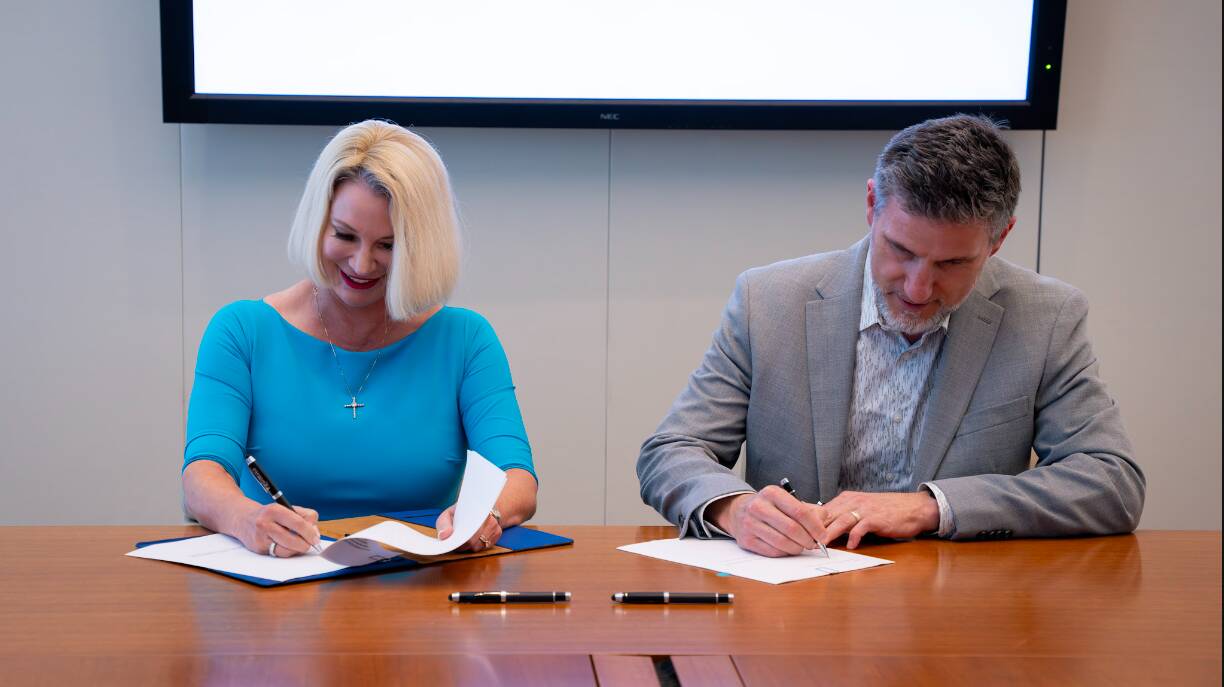Advanced carbonate fuel cell technology in carbon capture and storage
In this article
ExxonMobil and FuelCell Energy, Inc. partnership
For three decades, ExxonMobil has been a leader in carbon capture and storage applications. In 2017, ExxonMobil captured 6.6 million metric tons of CO2 for storage — the equivalent of eliminating the annual greenhouse gas emissions of more than 1 million passenger vehicles.
The greatest opportunity for future large-scale deployment of CCS may be in the natural gas power generation sector, since capturing CO2 from coal-fired generation is roughly twice as expensive. In 2016, ExxonMobil announced a partnership with FuelCell Energy, Inc. to advance new technology that may substantially improve CCS efficiency, effectiveness and affordability for large natural gas-fired power plants.
Our research indicates that by applying this new technology, more than 90 percent of a natural gas power plant’s carbon dioxide emissions could be captured.
Carbonate fuel cell technology: better efficiency, more power and less carbon dioxide
Scientists at ExxonMobil and FuelCell Energy, Inc. are jointly pursuing new technology that could reduce the costs associated with current CCS processes by increasing the amount of electricity a power plant produces while simultaneously delivering significant reductions in carbon dioxide emissions. At the center of these efforts is a carbonate fuel cell.
Laboratory tests have indicated that applying carbonate fuel cells to natural gas power generation could capture carbon dioxide more efficiently than current, conventional CCS technology. In fact, our research indicates that by applying this new technology, more than 90 percent of a natural gas power plant’s carbon dioxide emissions could be captured.
During conventional carbon capture processes, a chemical reacts with the carbon dioxide to extract it from power plant exhaust. Steam is then required to release the carbon dioxide from the chemical — steam that would otherwise be used to move a turbine. The effect is to decrease the amount of electric power the turbine can generate.
Using fuel cells to capture carbon dioxide from power plants can result in a more efficient separation of carbon dioxide from power plant exhaust with an increased output of electricity. Power plant exhaust is directed to the fuel cell, replacing air that is normally used in combination with natural gas during the fuel cell power generation process. As the fuel cell generates power, the carbon dioxide becomes more concentrated, allowing it to be more easily and affordably captured from the cell’s exhaust and stored.
ExxonMobil’s research indicates that a typical 500 megawatt (MW) power plant using a carbonate fuel cell may be able to generate an additional 120 MW of power, while current CCS technology actually consumes about 50 MW of power.
Next steps in fuel cell technology development
ExxonMobil has been assessing a number of carbon capture technologies for many years and believes that carbonate fuel cell technology offers great potential. The technology’s capability has been tested in the laboratory, and data from those simulations is currently under analysis. Further development will involve a more detailed examination of each component of the system and optimization of the system as a whole.
The scope of the agreement between ExxonMobil and FuelCell Energy, Inc. will initially focus on better understanding the fundamental science behind carbonate fuel cells and how to increase efficiency in separating and concentrating carbon dioxide from the exhaust of natural gas-fueled power turbines.
Related content

Capture it. Move it. Store it: Three steps for reducing CO2 emissions
- Want to learn more about carbon capture and storage (CCS)?
- Clay, Mark and Elizabeth are here to help in a video series.
- They explain how CCS works, why it matters and what makes it safe.
2 min read
• Aug. 12, 2025
How we’re capturing carbon and storing it safely
- In a new video, our Kathleen Ash explains how we’re keeping carbon capture and storage (CCS) safe.
- We have robust systems to safely transport and store captured CO2 emissions.
- We’re committed to protecting the safety of communities in which we operate.
2 min read
• May 5, 2025
Calpine, ExxonMobil sign CO2 transportation and storage agreement for power generation project
- ExxonMobil to transport and store up to 2 million metric tons per year of CO2 from Calpine’s natural gas power generation facility.
- Calpine plans to produce ~500 megawatts of reliable low-carbon electricity, enough to power more than 500,000 homes.
- Project expected to bolster U.S. energy, strengthen industry competitiveness, and create jobs.
2 min read
• April 23, 2025
2024: A breakout year for our carbon capture and storage business
- We’re leading the creation of a new industry.
- 2024 was a big year for our CCS business.
- More milestones are ahead in 2025.
3 min read
• Jan. 9, 2025
Steel, ammonia and AI? Oh my! What can’t our CCS help decarbonize?
- We’re scaling up carbon capture and storage (CCS) technology.
- We’re leading the way in helping U.S. industries use CCS to meet demand for lower-carbon products.
- Next up: We’re working to expand our customers to include data centers to support AI growth.
4 min read
• Dec. 11, 2024
ExxonMobil secures largest CO2 offshore storage site in the U.S.
- ExxonMobil has secured access to over 271,000-acres in Texas state waters; ideal for CO2 storage
- Agreement will directly benefit the Texas Permanent School Fund
- Latest example of ExxonMobil’s leadership in building a carbon capture industry in the U.S.
3 min read
• Oct. 10, 2024





